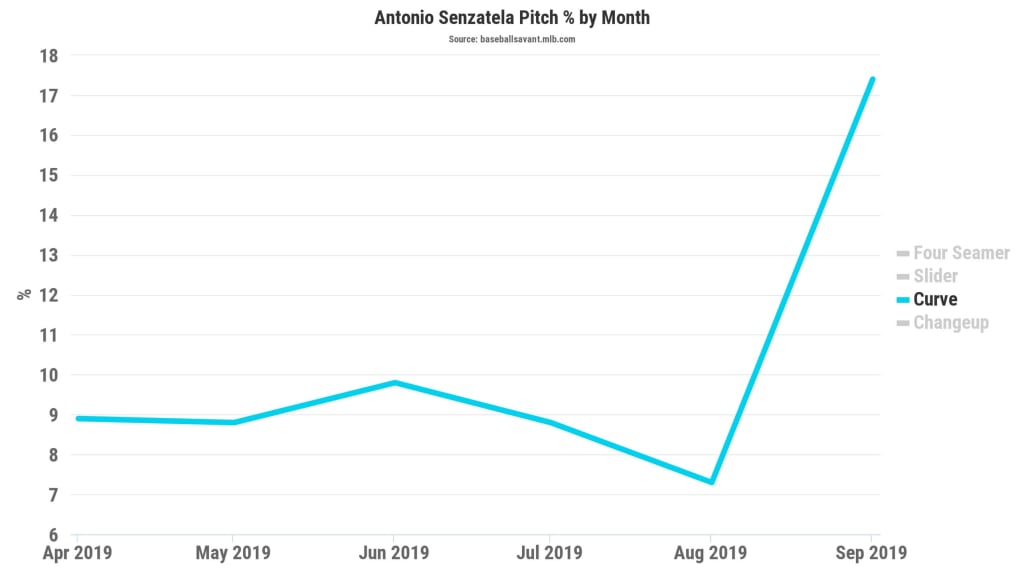SCOTTSDALE, Ariz. -- Rockies pitcher Antonio Senzatela says two talks put him on the way back to a prominent role in the starting rotation in 2020.
Senzatela, 25, started Game 1 of the 2018 National League Division Series against the Brewers and figured to build on that. But he missed the first three weeks of 2019 because of an infected blister on his right heel and then lost his confidence -- “Because I had pretty bad results,” he said -- and found himself at Triple-A Albuquerque by July.
As Senzatela enters competition for a rotation spot, the right-hander is building off his final four 2019 starts (3-1, 4.50 ERA) rather than the complete numbers (11-11, 6.71 ERA in 25 starts).
Senzatela’s first words of motivation came from, well, himself, before the improved ending.
“I looked at the mirror and said, ‘Two ways to go: You can work hard, get back and get better, or go home,’” Senzatela said. “I’ve got one month to get it back and be good. I put in my mind that every day is a new day.”
The other talk was with fellow starter German Márquez, who shared a key observation during a catch session in August. Senzatela would unleash a nice curveball while throwing on the outfield grass but keep it in his pocket on the mound.
“He just told me, ‘Why don’t you throw the curveball in games?’” Senzatela said. “I told him, ‘I don’t have too much confidence in it.’ He said, ‘Just try it.’”
Senzatela was throwing a fastball and slider but no true off-speed pitch. The danger of a two-pitch repertoire came to light on Aug. 30, when he was pitching decently against the Pirates before Melky Cabrera socked a three-run homer on a slider that was well-located but predictable.
Senzatela’s changeup, a standout pitch in the Minors that had never worked in the Majors, mysteriously had started causing uncomfortable sensations along the nerves from his ring finger to his elbow.
According to Statcast, Senzatela's curve represented 5.2 percent of his pitches against the Pirates and he had never thrown it more than 9.8 percent in any month through August. In his final five starts, the usage jumped to 17.4 percent, and he was above 20 percent in his final two outings. Batters hit .185 and swung and missed 37 percent of the time on curves in September.

“I told him it was good,” Márquez said. “And the velocity difference was good between the slider and the curveball, so he had another pitch.”
Senzatela is about 15 pounds lighter than the end of last season, having resisted desserts and cut down on bread. He’ll have to watch himself closely, since he tends to gain weight during the season. He plans to concentrate on the mix involving hard stuff and off-speed pitches, not the one involving chocolate.
“I feel like I’m starting to get there,” Senzatela said. “The end of the year was better last year. The next step will be to do that every start.”
Laying down the rule book
The new rule that requires a relief pitcher to either finish an inning or face three batters in that inning -- or, if he finished one inning and starts the next, faces a total of three batters -- will test managers strategically and, possibly, pitchers physically, the Rockies’ Bud Black said.
If there is a two-out favorable matchup, failure by the pitcher could lead to a mess. Fatigue is an unknown factor.
“A pitcher throws 30 pitches the night before and come the next day there is a scenario for him -- ‘Hey, there it is. You’ve got to get that guy. You’ve got two outs in the seventh,’” Black said. “And if you don’t get him, he’s got to keep going. And that second hitter has 15 foul balls, and bloops one in. Then he [the pitcher] has got to face another guy.
“Then his pitch count gets up to 30, and he’s pitched five out of the last eight days. You can’t go rescue. This is the new strategy that we have to work through prior to a game, when you talk about who’s available and who’s not.”
